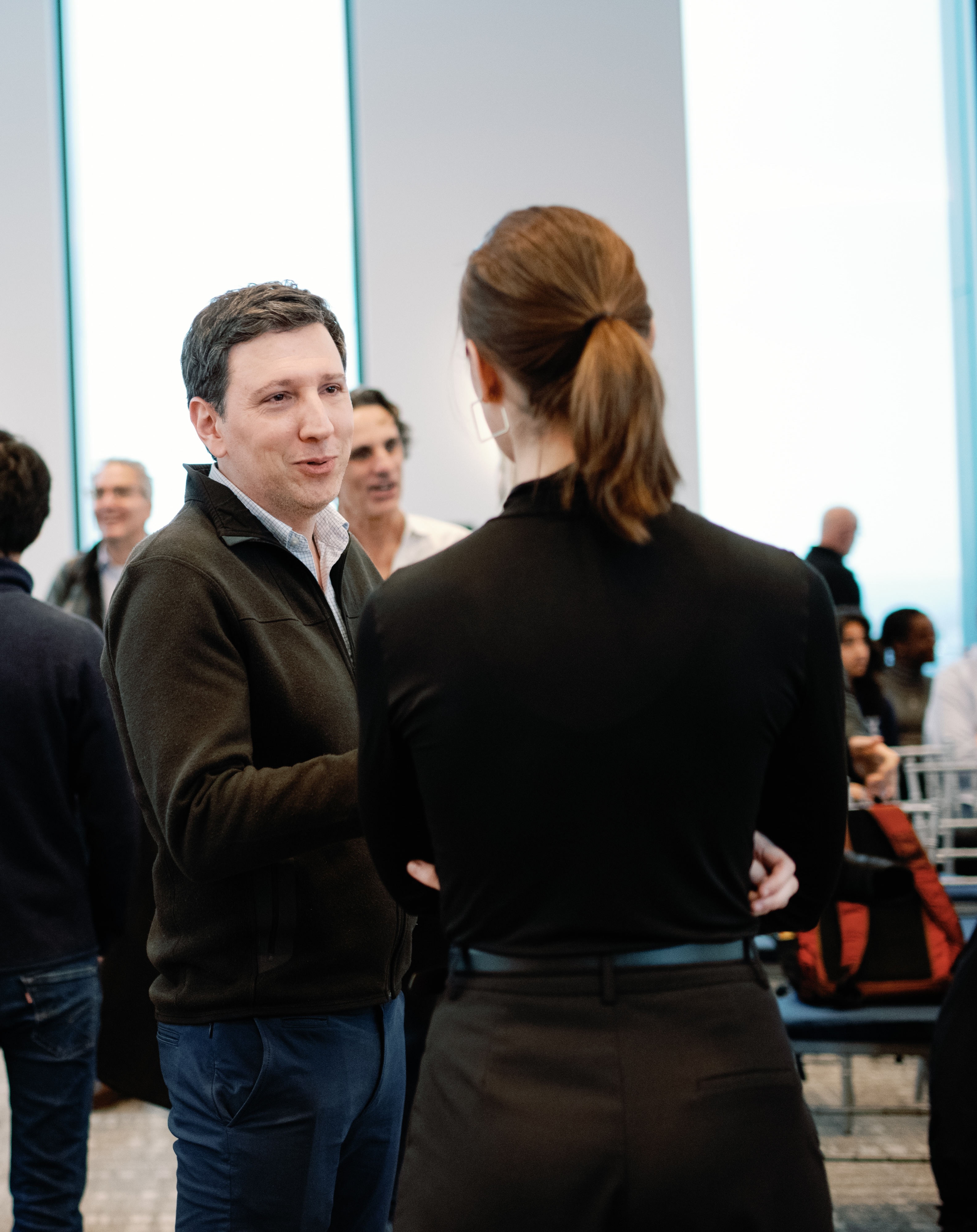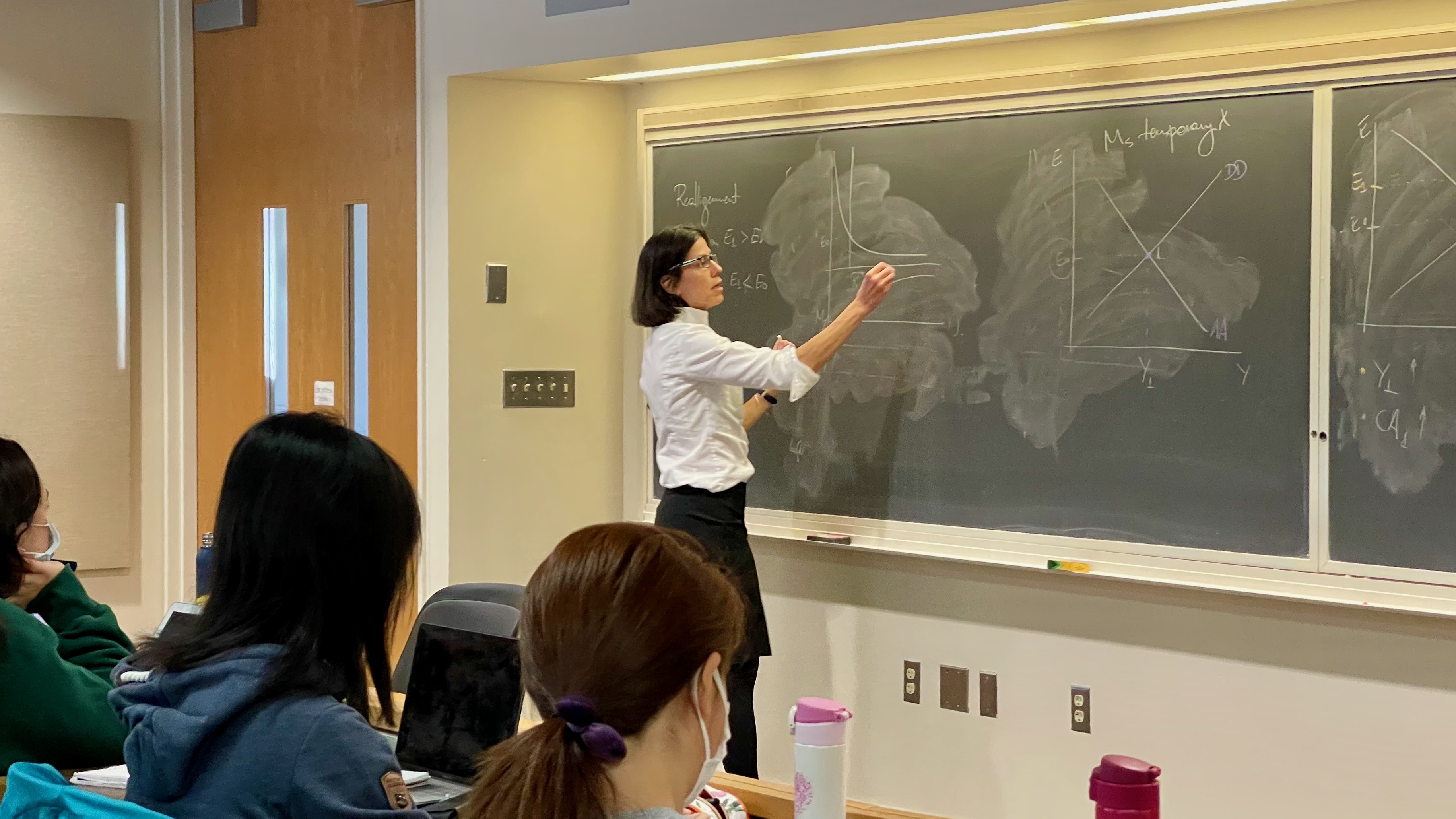In Conversation: Ana Cecília Fieler and Guillermo Noguera on global trade & current tensions
The two EGC affiliates discuss global value chains and how trade affects firms, workers, and economies – with broad implications for our current era of trade disruptions.

Firms and governments around the world are confronting rapid and unpredictable changes in the global trade landscape. Rising protectionism, geopolitical tensions, and market volatility are disrupting global value chains (or GVCs), testing alliances, and reversing decades of global integration.
These changes will impact global economic outcomes, particularly for low-income countries – so understanding their implications is critical. Ana Cecília Fieler, a lecturer in Yale’s economics department and co-director of the International and Development Economics Master’s program, uses firm-level data to study international trade’s influence on growth and development. Guillermo Noguera, a senior lecturer in the economics department, has conducted detailed data analysis on GVCs. Both are EGC affiliates and members of the Markets & Development initiative.
In a recent interview, they discussed their research on global trade and the diverse risks of today’s shifting dynamics – underscoring how trade both enables growth and exposes countries to new vulnerabilities.
Guillermo, much of your work is at the macro level. What have you learned about GVCs and the forces that drive them?
Noguera: From the 1990s until the late 2010s, the huge expansion in international trade was mainly due to the rise of GVCs, as countries increasingly split production stages across borders. Trade economists developed theories to understand the causes of these trends, and the consequences for welfare and development – but with a few exceptions, empirical work to support these theories lagged, mostly because GVCs are hard to measure systematically. In a paper with Robert Johnson, we made progress on this front by combining data on bilateral trade, production data, and input-output tables. Using an accounting decomposition, we measured the value added flows underlying conventional gross trade transactions (like iPhone exports from China to the US). For example, we quantified how input suppliers to China – like Japan and Korea – are more important in US imports than what is recorded, since their value added is embedded in Chinese goods. This means the US bilateral deficit with China is smaller, because Chinese exports have content from other countries – including content from the US, embedded as inputs in Chinese goods and exported back to the US as finished products.
In later work, we explored the drivers of these patterns. Using a workhorse trade model, we quantified the importance of three key drivers: technology changes, like China’s rising productivity; changes in endowments, like China’s increased human capital; and changes in trade costs from use of the internet, lower shipping costs, cheaper air travel, and reduced tariffs. We found the reduced trade costs is by far the most important determinant of changes in the patterns of value added relative to gross exports.
 Julia Luckett
Julia Luckett
Guillermo Noguera at the 2025 Simon Kuznets Memorial Lecture.
Cecília, your work is more micro. How do firm-level responses to trade shape broader patterns of growth?
Fieler: Much of my research focuses on the effects of international trade on labor markets and technologies in developing countries, especially middle-income countries. In the 1980s and ‘90s, many developing countries opened up to trade – but instead of boosting demand for unskilled labor, as many economists expected, the wages of skilled workers increased by 10% to 20% relative to unskilled workers.
Why is that? My research is part of a broader literature showing that firms engaging in international trade with rich countries tend to upgrade their technology and management practices – like integrated computer systems, more precise machines, or “just-in-time” systems to deliver high-quality goods on demand.
My work finds that the effects of trade may be much larger than previously thought, because these effects propagate through the production chain. In a paper with Marcela Eslava and Daniel Yi Xu using Colombian firm-level data and another paper with Banu Demir, Daniel Xu, and Kelly Kaili Yang using Turkish firm-level data, we find that firms engaging in trade with rich countries become more skill-intensive – and as importers and exporters upgrade, their domestic suppliers and customers do too. Modeling this, we show how trade can spur broad changes in the domestic market.
However, these effects only occur under two conditions. First, a sufficiently educated labor force – manufacturing as a whole can’t become skill-intensive without skilled workers. Second, perhaps more polemically, running trade surpluses with rich countries – as East Asia did for decades. Demand from rich countries, and interaction with their advanced firms, is what leads importers and exporters to upgrade.
Noguera: You mentioned skilled workers benefited and unskilled workers were adversely affected. Overall, did you find that Turkey was better off?
Fieler: We avoid making explicit welfare comparisons, partly due to variations in household preferences and consumption patterns – but it’s unlikely that unskilled workers in Latin America benefited. These countries’ manufacturing sectors became smaller after liberalization; firms became more skill-intensive by shedding unskilled workers. Other papers – including work from Colombia by EGC affiliates Orazio Attanasio and Penny Goldberg with Nina Pavcnik – show that trade liberalizations are associated with increases in the informal sector.
This suggests that Latin American countries didn't match the two conditions of having enough skilled workers or running trade surpluses. Manufacturing became more skill-intensive, but it also shrunk and became less relevant.
 Vestal McIntyre
Vestal McIntyre
Fieler teaching International Finance (Econ 407) October, 2021.
Guillermo, what motivated your paper on Bangladesh’s garment sector, and what were its key findings?
Noguera: While more “macro” approaches let you analyze aggregate patterns, they typically assume that sectors are homogenous. To go deeper, we focused on a single GVC link: Bangladeshi garment production. What made Bangladesh especially interesting was its data: to import duty-free, firms are required to document in detail each order placed by foreign firms. For researchers, this is great – we can observe prices and quantities of exported garments as well as the imported fabric used in production.
We studied how exporters’ markups varied across foreign buyers, classifying buyers by their sourcing strategies. “Spot” buyers seek the lowest price; they typically have many partners and place large orders. “Relational” or just-in-time buyers place smaller but more frequent orders and have fewer long-term partners – incentivizing producers to ensure quality and avoid delays, even if they have to fulfill individual orders during negative shocks like strikes.
Our central finding is that exporters charge higher markups to relational buyers for similar products, making trading with relational buyers more profitable – and our model shows that stable, long-term relationships allow suppliers to recoup potential losses during shocks. Spot buyers pay lower markups, but they receive less assurance that orders will be fulfilled during shocks.
Fieler: Do you find that different buyers take different sourcing strategies, or that buyers often do a mix?
Noguera: The literature emphasizes the latter. However, we found robust evidence that sourcing strategies are chosen at the firm level and used with most, if not all, partners. For instance, H&M acts as a relational buyer across many countries, while J.C. Penney is consistently a spot buyer. One likely reason is that rearranging internal management around a sourcing strategy requires significant costs.
Fieler: Do you find that these long-term relationships offer benefits beyond increased profits – such as skill intensity or other firm improvements?
Noguera: Our data does not allow us to answer this question directly, but my sense is that there isn't substantial scope for such improvements: these exporters produce similar goods with comparable technologies. We do observe that the production lines serving relational buyers do not significantly differ from those serving spot buyers in terms of supervisory structures, worker skills, or other observable attributes.
How do your research agendas speak to current global trade tensions?
Fieler: My work and a lot of other research shows that trade with rich countries offers great benefits for developing countries – but the strategy that worked well for East Asia is no longer viable. That said, the reshuffling of international trade and the vacuum left by China does create opportunities. The previous US-China trade war, for instance, greatly benefited countries like Mexico. This time, some Latin American countries, like Brazil and Argentina, have the most potential to expand – but they struggle with bureaucracy, corruption, and heavy regulations and taxes, so I’m skeptical they’ll be able to capitalize.
Disruptions in international trade might also affect capital markets. A paper by Gita Gopinath and Jeremy Stein notes that the US dollar’s dominance in capital markets partly stems from its dominance in trade. If the US pulls back from trade, demand for dollars may fall causing an increase in the interest rates of dollar-denominated debt. Given current levels of US debt, such an increase could be problematic.
Noguera: Just as lower trade costs encouraged firms to split production across borders, rising costs will reverse the trend. We’ll see more reshoring and more investments in countries with less protectionist policies. As trade costs and policy uncertainty rise, buyers using relational sourcing strategies are better positioned to withstand these disruptions than those relying on spot sourcing, since the long-term relationships incentivize sellers to sustain trade even during challenging conditions.
How we assess who benefits or suffers from trade policy also matters. Despite “made in” labels, most goods aren’t produced in single countries. Politicians’ focus on bilateral deficits is misguided – a lot of value in, say, US imports from China comes from other countries. Trade shocks, like tariffs, ripple through supply chains. Before putting policies in place, we would benefit from a clearer global view that these GVC have a lot of participants that may get hurt indirectly, including the groups protectionism seeks to benefit.